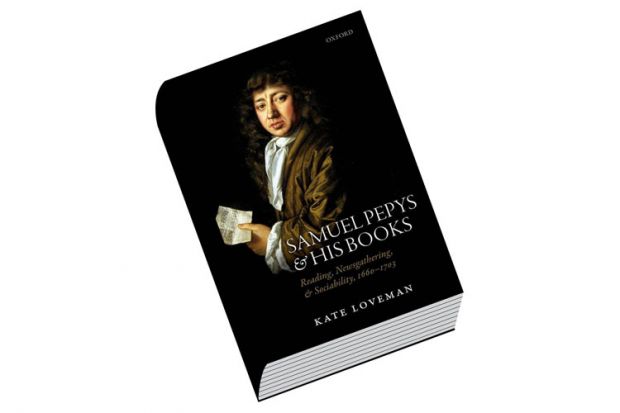Fifty Shades of Grey remains the biggest, quickest-selling Kindle title of all time – proof, if needed, that porn is both in demand and embarrassing to read on the Tube. As Kate Loveman argues in this terrific book, we are what we read or are seen to be reading: collections of books are about the collector’s projection of “versions of themselves”. “Adult” covers of J. K. Rowling’s Harry Potter series reassured grown-up readers that they were doing something more than wasting time on kiddy books. As both these examples illustrate, our reading is an activity through which others read us: Samuel Pepys’ library was “a projection of the owner’s mind, a record of the self”.
Reading is thus part of a complicated process of self-fashioning, an activity that forms and sustains our reputations as readers and so individuals – serious or trivial, earnest or fickle, erudite or populist. Moreover, reading is, like education more generally, part of a social etiquette and Pepys, in this respect, is “a superb source for exploring wider patterns in reading habits precisely because he was an inveterate social climber”.
But Pepys is more than an example of the reading practices of 17th-century England. He was also a collector of books and as the “Bibliotheca Pepysiana”, resident at his Cambridge college (Magdalene) since 1724, still affirms, such collections had multiple purposes as “sites of learning, repositories of wealth, claims to status, and manifestations of social ties”. Furthermore, from the 1690s, his library was “a politically charged space”. He remained loyal to James II after the not-so-Glorious Revolution of 1688 and his library testified to this allegiance: “centrally placed in the library was the portrait of Pepys’s exiled master, James II”. Loveman astutely shows how this sense of defeat was ameliorated by Pepys’ concentration on Cicero, whose “ideal of scholarly leisure offered a means of recasting what might otherwise have been deprivation and disgrace”. The library thus becomes a place of refuge and consolation.
Pepys’ curiosity and intelligence are evident in his range of reading matter. His possession of mathematical manuals is “a salient reminder that the history of reading involves the history of material culture and technology”. Such technical manuals helped his self-advancement at the Admiralty, while his reading of conduct literature “shaped on a fundamental level” his own writing, notably of the Diary.
With enthusiasm and an incisive critical eye, Loveman analyses Pepys’ varied attention to histories, plays, romances, novels, scientific books, biblical exegesis and religious controversy across works in Spanish, French, Italian, Hebrew, Greek and Latin. One of his favourite topics was naval history, even though his projected account of the English navy never came about – which leads Loveman to assert wryly that “we know more than we could otherwise ever hope to about seventeenth-century literature and history because a retired Secretary for the Admiralty decided that he could better serve posterity by preserving many books than by publishing one”.
Pepys wrote on 9 February 1668: “reading a little of L’Escolle des Filles, which is a mighty lewd book, but yet not amiss for a sober man once to read over to inform himself in the villainy of the world”. Try that one next time your Kindle is out of battery.
Peter J. Smith is reader in Renaissance literature, Nottingham Trent University, and author of Between Two Stools: Scatology and its Representations in English Literature, From Chaucer to Swift (2012, 2015).
Samuel Pepys and His Books: Reading, Newsgathering, and Sociability, 1660-1703
By Kate Loveman
Oxford University Press, 336pp, £60.00
ISBN 9780198732686
Published 11 June 2015




